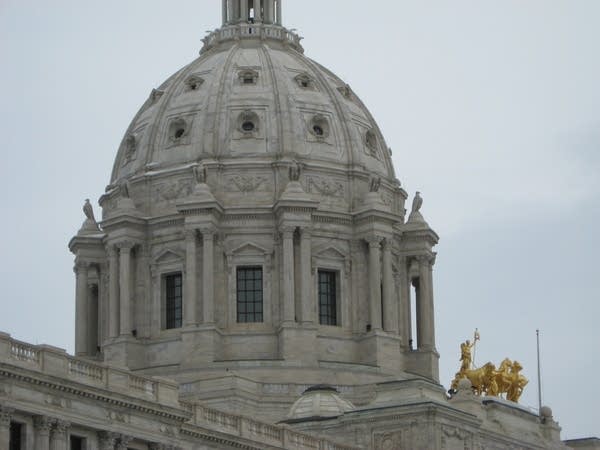Stimulus money may offset increases in state budget deficit
Go Deeper.
Create an account or log in to save stories.
Like this?
Thanks for liking this story! We have added it to a list of your favorite stories.

President Barack Obama is scheduled to sign the economic stimulus bill into law on Tuesday, but state officials say they still don't know exactly how much federal money they can expect. Minnesota's Management and Budget Commissioner Tom Hanson has been digging into the spreadsheet numbers as Governor Pawlenty's designated pointman on the stimulus.
Hanson told members of a Senate committee that his latest calculations show a few billion dollars coming for health care, education and state stabilization aid.
"For purposes of the general fund and our budget deficit, you're looking at about a $2.6 or $2.8 billion general fund bump in that first category of money," Hanson said.
"We're hoping... that the decline in state revenues is below the increase we're getting in federal funds. That would make all of our lives just a little bit easier."
That estimate is made all the more significant by the governor's warning last week that the state's $4.8 billion budget deficit could grow to as much as $7 billion when the next state economic forecast is released March 3.
Turn Up Your Support
MPR News helps you turn down the noise and build shared understanding. Turn up your support for this public resource and keep trusted journalism accessible to all.
The federal money will be calculated into that forecast and the revised deficit. Hanson doesn't yet know how much the deficit will grow, but he suggested to committee members the numbers could come out as a wash.
"What we're hoping Senator, is that the decline we are expecting in state revenues is below the increase we're getting in federal funds. That would make all of our lives just a little bit easier," Hanson said.
Following his testimony, Hanson said he hopes his assessment holds true as he nails down more details about the federal bill. But there could be some strings attached to that federal money.
In order to get all of the money designated for health care, Hanson says Governor Pawlenty will have to restore the cuts he proposed in state-subsidized health care programs.
In addition, he says the governor might have to give up a proposed accounting shift in funding for K-12 schools to protect the education portion of the stimulus money.
The deficit-filling potential of the federal stimulus is not easing the budget concerns of many legislators.
DFL Sen. Terri Bonoff, of Minnetonka, reminded her committee colleagues that the federal money delays some budget pain but doesn't cure it.
Bonoff says using one-time money to balance the books is a dangerous approach.
"So I think that none of the senators have any intention of doing that," Bonoff said. "And we're aware of the limitations of the money and the importance of having our budget in structural balance ongoing for the future and the long term."
A key Republican on the committee agrees. Sen. Geoff Michel of Edina, says the state still needs a plan to reshape government and reduce spending.
"It's a band aid, but this is not a reforming budget balancing measure," Michel said. "This is kind of a classic, get us through to the next election. But we will still have big budget deficits in the out years if this is all we rely on." House and Senate leaders are scheduled to meet with Commissioner Hanson on Wednesday to discuss the latest information on the federal stimulus.




